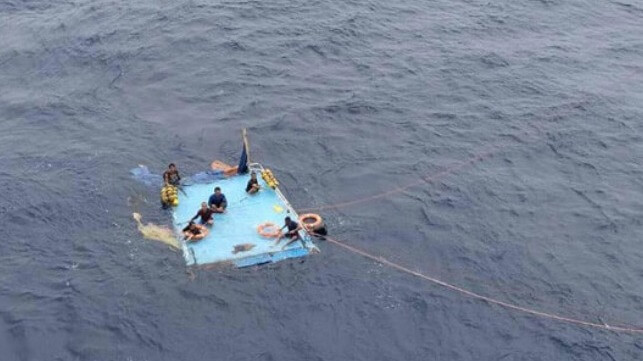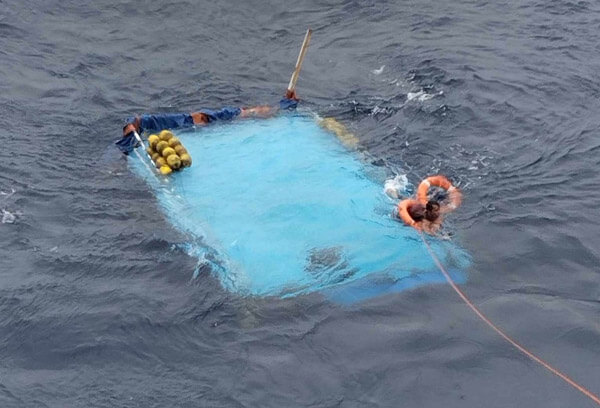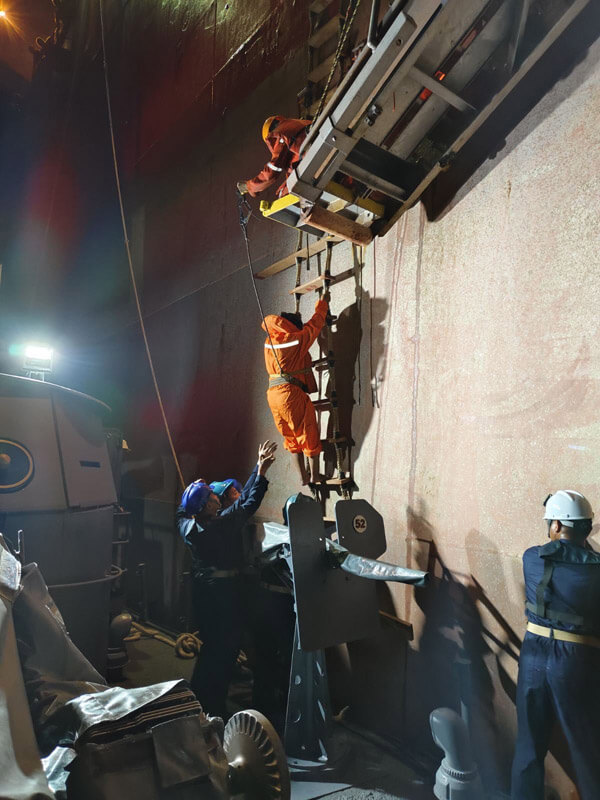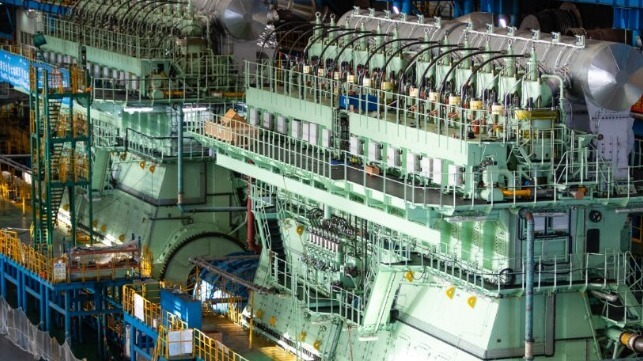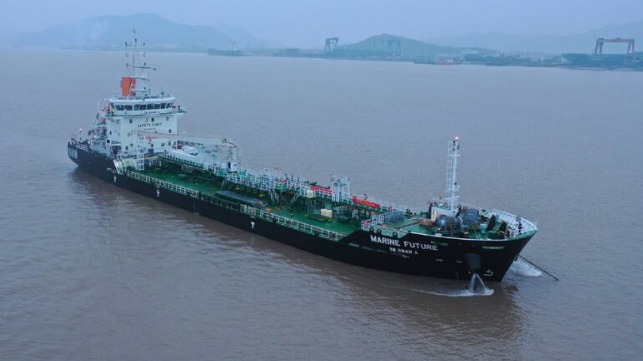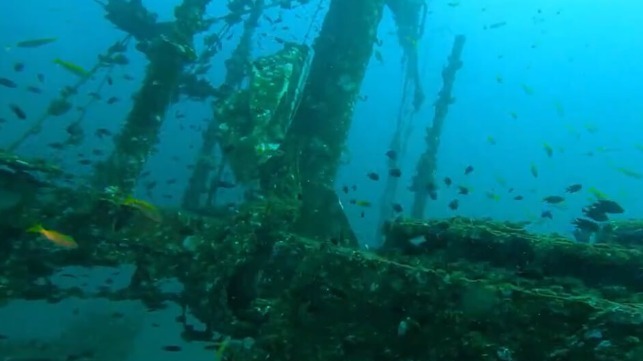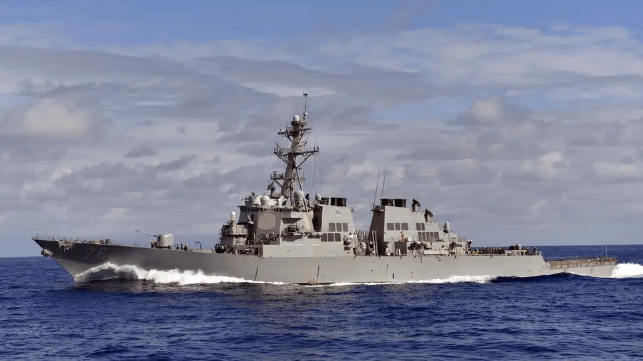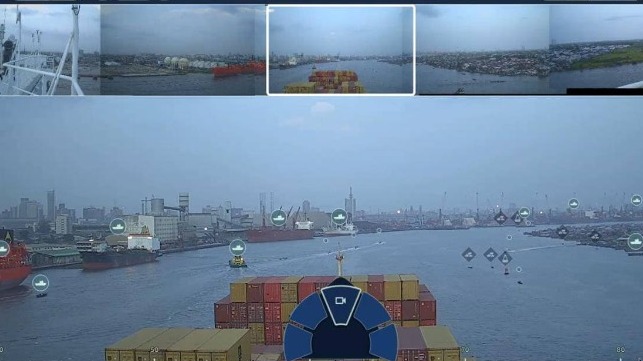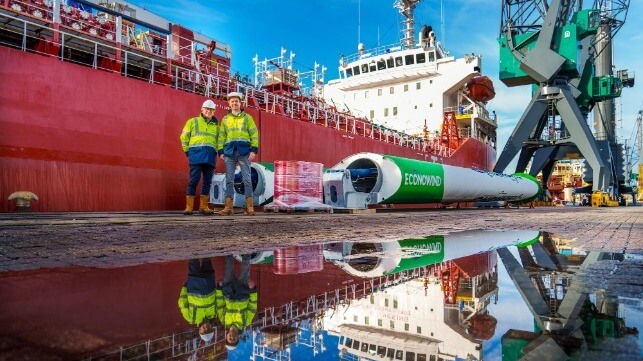The NDP's crusade to bring down 'corporate greed'
, The Canadian Press
Pushing a grocery cart up and down the aisles of Loblaws, Jagmeet Singh has to admit it's all a little bit awkward.
After all, the NDP leader has lambasted the grocery giant and its former president Galen Weston Jr. — famous among Canadians for his 30-second COVID-era TV and radio ads — for "ripping people off."
Today, however, Singh is just running errands. Well, mostly.
He selects a loaf of sourdough bread and a bouquet of Valentine's Day flowers for his wife. In the dairy aisle, he eschews the familiar yellow "No Name"butter in favour of a more costly brand — a small act of personal rebellion.
"I wouldn't have thought twice about it before," he says.
But Singh has made it a central tenet of his party's policy to take on big companies he believes are making record profits while ordinary people struggle to afford the basics.
"That is something that people are becoming really aware of — and that creates some opportunity for us to fix it."
Singh's private member's bill, which aims to bring down the cost of basic essentials, passed second reading in the House of Commons with the support of Conservative and Bloc Québécois MPs.
Liberals have voted against the bill, with some accusing the NDP leader of trying to stifle free enterprise.
"Do you think that I want to stifle them from ripping people off? I 100 per cent want to stifle them," Singh says.
"I want to stifle them from exploiting people."
The bill proposes stiffer penalties for price and wage-fixing – measures that would have had consequences for the bread price-fixing scandal of 2017. It would also set rules to prevent mergers that Singh believes lead to abuse.
Under pressure in the polls, the Liberals introduced measures aimed at easing the pain, including a grocery "rebate" last summer and changes to the Competition Act to help boost competition in the sector.
Last month, Industry Minister François-Philippe Champagne said he was actively working to lure international grocers to Canada to spur retail competition, an effort critics derided as futile.
As for the Conservatives, they have relentlessly blamed higher prices across the board on the Liberal government's price on carbon-based pollution.
Loblaws did not respond to a request for comment.
In the past year, Singh has been trying to tap into palpable consumer anger in Canada as his party tries to capitalize on cost-of-living concerns in order to expand its political footprint in the next federal election.
He's on to something, if Bartosz Bos is any indication.
Bos runs Cutouts Canada, which sells tote bags emblazoned with Weston's face in the style of former U.S. president Barack Obama's famous campaign poster, the word "Hope" replaced with "Starve."
Bos said he wishes "feckless bootlickers in government" would develop policies in that benefit Canadians.
Most, however, are there "to collect a golden pension or to secure a plum position in the private sector after they're voted out of office," Bos said. Canada is no longer a democracy, but "an oligopoly run by select businesses," he added.
"From energy and telecommunications to media, travel, and feeding ourselves, we are under the thumb of a few powerful corporate entities run by craven sociopaths who would drown us all in a single glass of water, if it suited their purpose," Bos said in an interview conducted by email.
Like Singh, Bos said he would prefer not to shop at any Loblaws-affiliated stores, but the company is so vast "it's practically impossible" not to shop there.
Most grocery stores in Canada are owned by Loblaw Companies Ltd., Sobeys Inc. and Metro Inc., leaving consumers with few alternatives.
A new survey by Leger for The Canadian Press found about 64 per cent of respondents fear the price of groceries is going up. Only 28 per cent said it was about the same, while just five per cent say it's on the way down.
They vary, however, when it comes to who deserves the blame.
Some 27 per cent of respondents attributed the increase to global factors like inflation and supply chain issues, while 26 per cent said grocery chains are squeezing consumers in the name of profit. Another 23 per cent said it's the federal government's fault.
The survey, conducted online between Feb. 16-18, surveyed some 1,529 Canadian respondents. Online surveys cannot be assigned a margin of error because they are not considered a random sample.
Nearly one in four respondents, or 23 per cent, said they found the federal government's grocery rebate from last July helpful, while more than half — 52 per cent — did not.
But for Singh, the fight against Weston and Loblaws is a personal one, even though he acknowledged that his MP's salary leaves him better off than the average Canadian consumer.
But for Singh, the fight against Weston and Loblaws is a personal one, even though he acknowledged that his MP's salary leaves him better off than the average Canadian consumer.
In his early 20s, Singh took in his 15-year-old brother as his dad struggled with addiction. In those days, he said, grocery store aisles were stressful places as he struggled to afford enough food for the week.
"I don't feel it when I go to the grocery store now, but I feel it when I look at the faces of the people I see," he said as he pushed his cart through the aisles.
"I see the kind of look they have when they see the register and the number going up and up. So I can't feel relaxed when I see the people around me hurting."
This report by The Canadian Press was first published Feb. 22, 2024.
Canada's biggest grocer hits all-time high twice in one week
, Bloomberg News Feb. 22, 2024.
Loblaw Companies Ltd. set an all-time high for the second time this week as Canada’s biggest grocer rallied on a fourth-quarter earnings beat and expansion plans.
Shares ended the session up 3.5 per cent to close at $142.92 Thursday, the highest price for the stock since Loblaw began trading on the public markets in January 1983. The grocer earned an adjusted $2.00 per share in its fourth quarter, surpassing analyst estimates by ten cents.
Earnings were bolstered by sales growth in pharmacy and healthcare services as well as e-commerce. Loblaw topped its previous record set on Tuesday when the grocer announced it would be putting $2 billion toward adding 40 new stores to its network and renovating more than 700 others.
Loblaw will continue to outperform its peers like Empire Company Ltd. and Metro Inc. given its broader exposure to discount brands and pharmacy retail locations, according to Michael Van Aelst, an analyst at Toronto-Dominion Bank. Loblaw has a “superior 2024 earnings outlook” compared to Metro and Empire, he said.
Loblaw shares have advanced 11 per cent year-to-date, nearly doubling Metro’s growth of 6.3 per cent and Empire’s 3.0 per cent decline.
Why Canadians see the biggest grocers as the villains of food inflation
, The Canadian Press
Galen Weston may not be the president of grocery giant Loblaw anymore, but you wouldn’t know that based on how often his name and face appear in connection with the company: in memes, on social media, and now emblazoned across the top of a new Reddit forum dedicated to high food prices in Canada.
Emily Johnson, a mental health and addictions worker in Milton, Ont., created the page r/loblawsisoutofcontrol in November as a space to vent and make jokes. But when Loblaw made headlines in January for reducing its discounts on food nearing its sell-by date — a decision the company later walked back — the page saw thousands of sign-ups overnight. It now has almost 21,000 members.
“I think that there had been a lot of frustration and resentment that had been building already. And this was kind of the straw that broke the camel’s back,” said Johnson.
The page is a testament to Canadians’ growing frustration with grocers, whose profits climbed as food inflation wreaked havoc on families across the country, peaking at 11.4 per cent before easing over the past year.
Against that backdrop, Canadians are increasingly turning a critical eye to the handful of companies that sell the vast majority of groceries, and experts say the grocers face an uphill battle to regain consumers' trust.
The grocers, for their part, say they've been battling tens of thousands of price increase requests from suppliers and are doing their best to mitigate the rising tide of inflation.
Only Costco appears to escape the keen eye of strapped shoppers, tying with outdoor retailer MEC as the most trusted brand in Canada on the University of Victoria’s 2023 Gustavson Brand Trust Index.
Loblaw, meanwhile, ranked 304th on the list of more than 400 brands, “highlighting the challenge it faced in demonstrating value while it reported high profits,” the report said. Walmart was even lower, at 354. Metro ranked 93rd, while Sobeys was 110th.
The three Canadian grocers have come under particular scrutiny amid growth in both prices and profits, said Rachel Thexton of Thexton Public Relations.
“You certainly want your investors to be happy, and profits to grow with the business, but you also want to maintain the trust and the respect of the consumer.”
That's why Loblaw's discount change struck such a nerve, said Monica LaBarge, an assistant professor at Queen’s University studying food access and consumer well-being — it was a relatively small change, but one that consumers viewed as part of a wider problem.
Memories of the bread price-fixing scandal may have helped fuel Canadians’ growing skepticism, said LaBarge.
“There's a sort of general feeling of, ‘Oh, here we go again,’” she said.
While there has been debate over whether their actual profit margins grew significantly, in dollar amounts it’s certainly been a good few years for the grocers.
But it's been a difficult few years for many Canadians, said LaBarge, with food bank usage on the rise and consumers feeling like they're bearing the brunt of inflation while the grocers are "doing just fine."
“It feels very unjust when they're continuing to make just as much money as they always have, and everybody else is suffering.”
For Loblaw especially, image problems have compounded since the beginning of the COVID-19 pandemic, said Thexton. Alongside simply being the biggest Canadian grocer, the company has made a series of public-relations missteps.
“Loblaws is the face of this because their communication has been so poor,” she said.
One example: after a price freeze on No Name items ended in early 2023, the company inadvertently stoked public backlash by responding to critical posts from the company’s official account on X (formerly Twitter), Thexton said.
“We may be the face of food inflation but we are not the cause. The staggering increase of costs throughout the food supply chain end up on our shelves, leading to higher food prices,” read one post on Jan. 31, 2023.
The company's defensive tone struck a nerve with many Canadians, said Thexton.
A series of ads featuring Weston also didn’t sit well with consumers.
Weston, who in 2022 made almost $12 million in compensation through both Loblaw and George Weston Ltd., isn't exactly a relatable figure to people struggling to afford food, said Thexton.
Making Weston the face of the company backfired, agreed Johnson.
“I think that by making himself the face of Loblaws, one of the most prolific grocers in Canada, he also made himself the face of everyone's resentment.”
The Canadian Press reached out to Loblaw with detailed questions for this story, as well as Metro Inc., Empire Company Ltd. and Walmart Canada. Empire did not respond.
Loblaw empathizes with the challenges Canadians have faced amid inflation, said spokeswoman Catherine Thomas in an emailed statement. However, “retailers have faced a disproportionate amount of criticism despite cost increases from across the entire supply chain,” she said, noting that Loblaw’s internal measure of inflation has been lower than the consumer price index for the past few quarters.
“For our part, we know that grocers like Loblaw have more work to do to rebuild the trust we have enjoyed for more than 100 years and we remain highly focused on doing so,” said Thomas.
Metro spokeswoman Marie-Claude Bacon said the grocer’s efforts to mitigate the effect of rising food prices through things like private label products and promotions are working.
“Food prices have stabilized, but price stabilization is not simply achieved overnight, nor is it the exclusive responsibility of grocers,” she said in an emailed statement.
Like the other grocers, Walmart reiterated its commitment to keeping prices as low as possible.
However, even before food prices started rising, certain pandemic-era moves were already drawing negative attention to the grocers.
For example, Loblaw, Metro and Empire came under fire in 2020 after cutting pandemic bonuses, or "hero pay," within a day of each other in June.
The same year, Walmart Canada, Loblaw and a buying group that represents Metro introduced new supplier fees in 2020 to help pay for infrastructure investments. The move helped prompt work on a grocery code of conduct meant to level the playing field for suppliers and smaller grocers — but the code is currently at a standstill as Loblaw and Walmart have refused to sign it, citing concerns that prices will rise.
The code is just one talking point seized by politicians over the past year as they’ve summoned grocery executives to answer questions in Ottawa. Grocery leaders have also been grilled over rising profits, executive compensation and their plans to stabilize food prices.
All that political attention has definitely helped validate Canadians’ concerns, said Thexton.
But there are signs that Loblaw is starting to get the picture, she said — and reversing the discount reduction is one of them.
"Perhaps they're ... starting to understand that really hearing the consumer is vital for their business."
Having Weston step back from a more public-facing role was also a good step, she said.
In April 2023, Loblaw announced that Per Bank would take over as president and CEO by the first quarter of 2024. Weston remains chairman of Loblaw and CEO of holding company George Weston Ltd.
Another initiative that Thexton said is a step toward rebuilding Loblaw’s reputation is a new discount program called “Hit of the Month.”
The program launched in February with four month-long deals across its banners, including boxes of Kraft Dinner for just 55 cents.
Whether the animosity toward grocers fades or is here to stay depends on the economy, and on grocers’ communication strategies, said Thexton.
“The grocers can turn this around," she said. "Loblaws can turn this around."
This report by The Canadian Press was first published Feb. 23, 2024.
Loblaw profits and sales continue growing as shoppers look for more deals
, The Canadian Press
LOBLAW COMPANIES LTD (L:CT)
REAL-TIME QUOTE. Prices update every five seconds for TSX-listed stocks
Canada's largest grocer expects this year to be much like the last: customers continuing to seek discounts and deals, leading to more growth at the company’s discount brands and banners, and higher profits.
"We expect our retail business to grow earnings faster than sales, and adjusted earning- per-share growth in the high single digits," Loblaw Cos. Ltd. chief financial officer Richard Dufresne said.
The company saw its earnings and sales rise in the fourth quarter of 2023 and for the full financial year, as its discount stores such as No Frills outperformed other banners.
Dufresne told a conference call to discuss the company's latest results that Loblaw is gaining market share in the discount segment and holding its own against its peers in the rest of the grocery market.
"We're very happy with what's happening with our market share performance, specifically discount. And so that tells us that our strategies are working," he said.
The company has been expanding its discount footprint across the country, opening eight more Maxi and No Frills locations in its fourth quarter. It plans to keep that growth going in 2024, having announced a $2-billion capital investment plan earlier this week.
The expansion will result in more than 40 new discount stores, and also involves renovations, relocations and 140 new pharmacy care clinics — almost tripling its total pharmacy care footprint from the current 74.
"This is a new initiative. And we're actually quite thrilled with what it's doing for us," Dufresne said.
It was the first time that analysts on an earnings call heard from Per Bank, the new president and CEO of Loblaw. The European retail executive joined the company as former president Galen Weston stepped back from day-to-day operations, though Weston remains chairman of Loblaw and CEO of holding company George Weston Ltd.
Bank said he expects Canadians will continue to hunt for deals in three ways: responding more heavily to promotions; buying more house brands, especially No Name; and switching over to discount stores.
The company has carved out so-called hard discount stores Maxi and No Frills into a separate division, he said.
Loblaw said its investment plan will create more than 7,500 jobs in stores and in construction. The $2.2 billion in gross capital investments will be partly offset by about $400 million in proceeds from property sales, it said.
The company, which owns the Loblaws, Shoppers Drug Mart, No Frills, Real Canadian Superstore and T&T banners, has a network of 2,500 stores across the country.
Loblaw's results for the fourth quarter were better than expected, RBC Dominion Securities analyst Irene Nattel said in a note to clients.
In the fourth quarter of 2023, Loblaw said it earned a profit available to common shareholders of $541 million or $1.72 per diluted share for the quarter ended Dec. 30. The result compared with a profit of $529 million or $1.62 per diluted share in the last three months of 2022.
Revenue totalled $14.53 billion, up from $14.01 billion a year earlier.
On a same-store basis, food sales rose by 2.0 per cent, while drug sales increased 4.6 per cent, with front store sales growth of 1.7 per cent and pharmacy and health-care services sales growth of 8.0 per cent.
On an adjusted basis, Loblaw said it earned $2 per share in its latest quarter compared with an adjusted profit of $1.76 per share a year earlier.
Markets were expecting earnings per share of $1.90 as of Feb. 21, according to financial data firm Refinitiv.
The latest results come as Loblaw faces pressure from politicians and Canadian shoppers regarding inflation and the cost of groceries.
The company recently had to walk back a decision to reduce its discount on food items nearing their sell-by date after the move drew intense scrutiny.
Loblaw is also being urged by politicians to sign on to the grocery code of conduct, which it and Walmart Canada have said could raise prices.
This report by The Canadian Press was first published Feb. 22, 2024.


